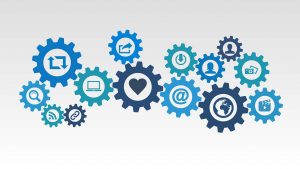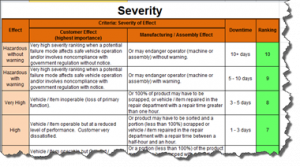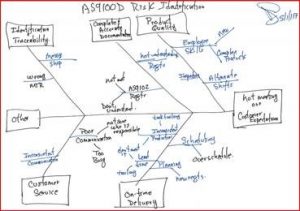
By Elena Garuc, Executive Director, FuzeHub
In today’s highly competitive marketplace, meeting customer demand isn’t enough. Small and mid-sized manufacturers must have a continuous pipeline of new sales in order to thrive and grow. However, it is becoming more challenging to connect with key decision makers to accomplish this.
Technology is constantly evolving and has changed how people communicate, research products and parts, and make purchasing decisions. In comparison to the past, your target audience now has more control over the sales process. The internet enables them to easily research information and pricing at the blink of an eye. Caller IDs, gatekeepers, spam filters, and “no soliciting” signs are making it more difficult for manufacturers to proactively connect with prospects. And the nonstop barrage of advertisements and sales pitches are making it more difficult to become memorable.
Developing a robust marketing program is crucial to increasing sales and sustaining growth. Here are four action items your business can take to improve your marketing outreach efforts.
1. Establish a Marketing Strategy:
Before you start sending out e-blasts or tweeting, your marketing initiatives must be driven by a structured strategy. An organized marketing strategy provides companies with the necessary foundation required before moving forward. While the specific defined goals and objectives are unique to every manufacturer, businesses are typically looking to achieve the following:
- Enhance brand awareness
- Generate new leads
- Convert leads into sales
- Increase sales from current and former customers
It’s vital for manufacturers to have a strong marketing strategy in place, so take the time to identify your goals and create a calendar of your efforts. Your strategy should also be written down and communicated with key decision makers. It is also vital to include leveraging multiple marketing channels, as targets communicate in different ways.
2. Update your Website:
Your website is essentially a “digital salesperson” for your organization. If your website isn’t consistently generating new leads and sales for your company, it’s time for an upgrade. A successful website does the following for your team:
- Gets found by quality prospects when your products and services are looked for in search engines (Google, Yahoo, Bing, etc.)
- Establishes your industry credibility
- Engages with and nurtures website visitors at all stages of your sales cycle
- Depicts your brand in a positive light
- Provides your team with data and analytics to help the sales process
In addition to dynamic graphics highlighting your brand, updating your website’s content is critical to digital success, as your content should provide a simple journey for your website visitors. Providing helpful information via checklists, white papers, blog entries, and eBooks will help you engage with your audience. Sharing case studies and testimonials validates your business.
Whether you have an internal marketing specialist or use an outside vendor, Search Engine Optimization (SEO) and Search Engine Marketing (SEM) efforts will help you increase website traffic. In the age of smartphones, it is also imperative to have a mobile responsive design.
3. Embrace Social Media:
Social networking is no longer a fad – it’s a regular method of communication and conducting business. Social media platforms can help your team connect with new prospects, showcase your products, share content, and increase your website traffic. Here are some ways manufacturers can use the most popular social media sites:
- LinkedIn – LinkedIn has a plethora of established networking groups where people can share information, ask questions, and network. By joining LinkedIn groups, you have an ability to connect with targeted leads and gain insight into industry news and trends.
- Facebook – This is a great way to constantly engage with customers and prospects to share content, gain feedback, and upload pictures and videos to personalize your company.
- Twitter – While it allows only 140 characters to share a message, Twitter is an easy way to quickly distribute company news and pictures.
- Pinterest – This platform is very visually based, so companies can share pictures of their products, parts, and processes.
- YouTube – From product reviews and product demonstrations for potential consumers, to quick FAQ videos for current customers, YouTube can help you connect with multiple audiences.
4. Rework your Email Marketing Communication:
Your e-mails or eNewsletters require more substance than just shooting out your sales pitch and hoping for the best. People receive a superfluous amount of emails, so yours have to be targeted, personalized, and unique. Here are five quick tips to improve your e-mail outreach:
- Branding – Your e-mail templates should be consistent with your brand. Incorporate your company’s logo, color scheme, and messaging into your e-mail communication.
- Content – Share information that genuinely helps your target audience. Providing how-to tips, industry news, and solutions to their problems will help you establish your credibility. All e-mails should have a clear “call-to-action” at the end and include links to your website.
- Scheduling – Sending out a single e-mail here and there makes it challenging for your audience to feel an ongoing connection with your company. Whether it’s monthly or quarterly, have a consistent email schedule and stick with it.
- List Maintenance – Individuals leave companies, organizations go out of business, and professionals get promotions. Consistently cleaning up incorrect e-mail records and adding new e-mails to your database will help you keep the list fresh.
- Analyze Results – All email marketing software vendors enable you to evaluate the tracking results of an e-mail campaign including views, un-subscribes, and click activity. This information will help you when you’re developing content for follow-up or future campaigns.
This blog post originally appeared in the Manufacturing Innovation Blog.
 Elena Garuc is the Executive Director of FuzeHub, New York State’s newest MEP Center. For over a decade, Elena has championed economic development initiatives and major marketing programs. In 2012, she was named to the Albany Business Review’s “40 Under 40”, a prestigious group of up-and-coming business leaders in New York’s Capital Region. Before joining FuzeHub, Elena served as Director of Communications and Marketing for the Center for Economic Growth (CEG), the NYMEP Center for the Capital Region. At CEG, she directed economic development initiatives and created successful programs such as an Upstate venture capital forum, biotechnology network, and technology roadmap portal. Today, Elena leads FuzeHub’s operations and works closely with its Board of Directors to realize strategic goals.
Elena Garuc is the Executive Director of FuzeHub, New York State’s newest MEP Center. For over a decade, Elena has championed economic development initiatives and major marketing programs. In 2012, she was named to the Albany Business Review’s “40 Under 40”, a prestigious group of up-and-coming business leaders in New York’s Capital Region. Before joining FuzeHub, Elena served as Director of Communications and Marketing for the Center for Economic Growth (CEG), the NYMEP Center for the Capital Region. At CEG, she directed economic development initiatives and created successful programs such as an Upstate venture capital forum, biotechnology network, and technology roadmap portal. Today, Elena leads FuzeHub’s operations and works closely with its Board of Directors to realize strategic goals.










 areas of interests are energy efficiency, renewable energy technology, aerospace, and smart systems. You can connect with him on
areas of interests are energy efficiency, renewable energy technology, aerospace, and smart systems. You can connect with him on 



 Maureen Brakke works in marketing and communications for the University of Utah MEP Center. She previously worked for the Utah System of Higher Education in marketing and communications, managing multiple initiatives, brands, blogs, and websites. Connect with her on
Maureen Brakke works in marketing and communications for the University of Utah MEP Center. She previously worked for the Utah System of Higher Education in marketing and communications, managing multiple initiatives, brands, blogs, and websites. Connect with her on 
 Paul Harbath is an industry expert with over 30 years of hands on experience in helping small manufacturers understand/implement quality management systems and lean/6-Sigma. Paul has a demonstrated ability to connect with the value adding employees by simplifying complex technical issues. Connect with him on
Paul Harbath is an industry expert with over 30 years of hands on experience in helping small manufacturers understand/implement quality management systems and lean/6-Sigma. Paul has a demonstrated ability to connect with the value adding employees by simplifying complex technical issues. Connect with him on 




 Elena Garuc is the Executive Director of FuzeHub, New York State’s newest MEP Center. For over a decade, Elena has championed economic development initiatives and major marketing programs. In 2012, she was named to the Albany Business Review’s “40 Under 40”, a prestigious group of up-and-coming business leaders in New York’s Capital Region. Before joining FuzeHub, Elena served as Director of Communications and Marketing for the Center for Economic Growth (CEG), the NYMEP Center for the Capital Region. At CEG, she directed economic development initiatives and created successful programs such as an Upstate venture capital forum, biotechnology network, and technology roadmap portal. Today, Elena leads FuzeHub’s operations and works closely with its Board of Directors to realize strategic goals.
Elena Garuc is the Executive Director of FuzeHub, New York State’s newest MEP Center. For over a decade, Elena has championed economic development initiatives and major marketing programs. In 2012, she was named to the Albany Business Review’s “40 Under 40”, a prestigious group of up-and-coming business leaders in New York’s Capital Region. Before joining FuzeHub, Elena served as Director of Communications and Marketing for the Center for Economic Growth (CEG), the NYMEP Center for the Capital Region. At CEG, she directed economic development initiatives and created successful programs such as an Upstate venture capital forum, biotechnology network, and technology roadmap portal. Today, Elena leads FuzeHub’s operations and works closely with its Board of Directors to realize strategic goals.